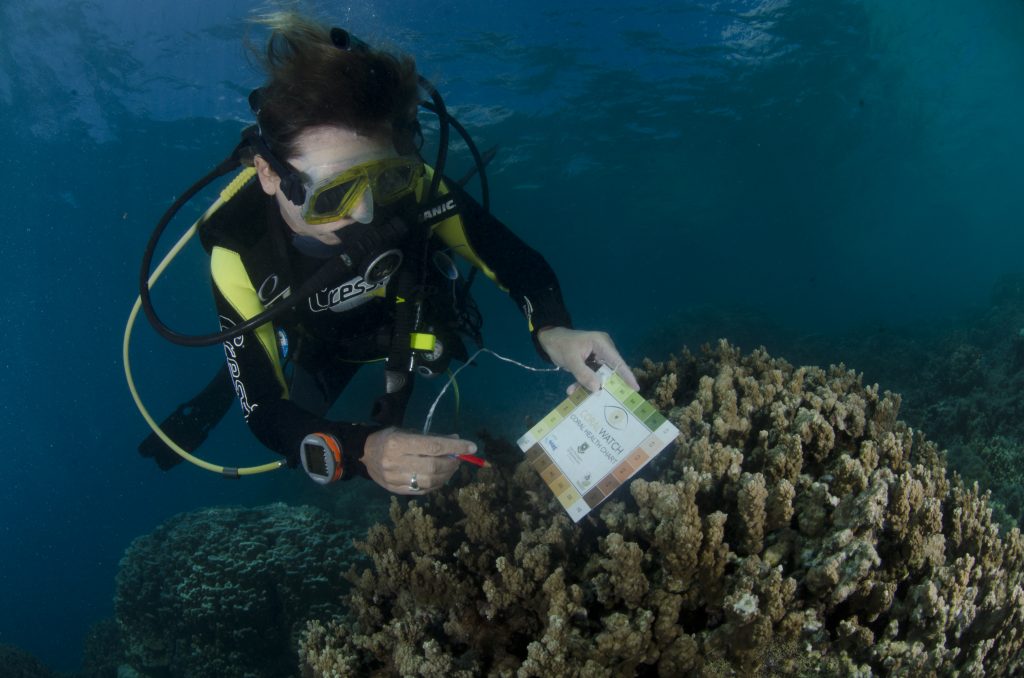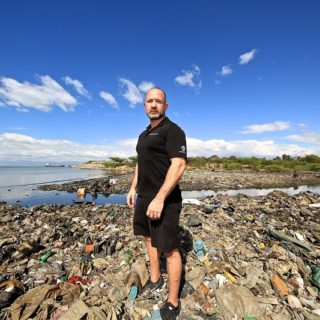Corals are living thermometers, measuring the health of the sea. If the water temperature rises above 28 degrees Celsius (82.4oF) or is cloudy, the corals start to lose microalgae that live symbiotically in their bodies.
Even after the excessive heat dispels or the water returns to crystal clarity, coral takes from three to four weeks to recover. If, in the meantime, more adversity hits the seas, the sensitive colonies may turn white – a sign that they have lost their lives.
The death of coral is mainly caused by the warming of their surrounding waters and the turbidity produced by pollution and the greenhouse effect. “After the two major global coral bleaching events in 2016 and 2017, half the Great Barrier Reef in Australia has died,” says Monique Grol, one of the managers of Coral Watch, a global coral health assessment program. The Great Barrier Reef is the largest coral colony on the planet and has been recognized by the United Nations Educational, Scientific and Cultural Organization (UNESCO) as a patrimony of humanity.
Conceived by marine biologist Justin Marshall, Coral Watch is a nonprofit project working in 80 countries to map and protect coral, and educate thousands of people about the importance of fighting to preserve our ecosystems. Based at the University of Queensland in the city of Brisbane, the initiative monitors more than 1,500 reefs, 57 percent of them located in Australia. “If we do not start acting immediately, we will not have reefs to show our children,” says Marshall, an optimist about the power of collective engagement in building a better future.

A volunteer analyzes a colony: from the color of the corals, you can identify their type, the quality of their health and their risk of extinction (Photo: Coral Watch)
VOLUNTEERS AS GUARDIANS
If human activity is the greatest cause of ecological problems, nothing could be better than turning it into a force for positive change. The Coral Health Chart was developed by the Coral Watch team to further the understanding of the reefs and encourage interested members of the public to get involved in monitoring them. You don’t have to be an expert nor a deepsea diver to observe the colonies, as many of them are in shallow water.
The materials (such as the chart) can be downloaded at the project site; they explain which colors indicate a healthy organism and which colors show show signs that the corals are ailing. The collected data can be entered into a world reef information database, which scientists and enthusiasts from several countries use for their research.
Coral Watch has involved more than 3,500 volunteers in analyzing 185,000 corals around the world. Last year alone, the data collected by these participants grew 25 percent. The number of participants grows each day. The program distributed free coral health monitoring kits in several countries. “People want to help, but they do not know how to,” says Monique. “I explain that by monitoring and sharing information and ideas with others, they help in the advancement of research.”

One of the program’s ambassadors, Leroy Noble, explaining the methodology of Coral Watch during an exhibition held in May 2017 at the project’s headquarters (Photo: Coral Watch)
“I still remember the feeling of admiration and emotion as I dove under the waves in that large underwater garden,” says Maria Bavins, one of the ambassadors and volunteers of Coral Watch, recalling the moment she fell in love with the reefs during a group expedition.
After that experience, the English marine ecologist and environmental scientist moved from the UK to Australia to work on coral conservation and management of the marine environment. “Coral regions always touch the lives of those who discover more about them, as they are one of the richest ecosystems on the planet,” she says.
The Great Barrier Reef of Australia is more than a sanctuary for corals, fish, mollusks and other species. It is also an economic asset, because the beauty of the ecosystem attracts a legion of admirers and generates income for the country. Between 2015 and 2016, US$ 6.4 billion was injected into the australian economy by the reef, and it created, directly or indirectly, 64,000 jobs, the majority in tourism, which accounts for 85 percent of the income in the local area, according to research conducted by Delloite in partnership with the Great Barrier Reef Foundation.
“The coral barrier still serves as a protection against storms and hurricanes. It is a source to produce drugs derived from some species and has immense cultural and educational significance,” says Maria. To protect the reefs is to preserve the past and to look after the future.



